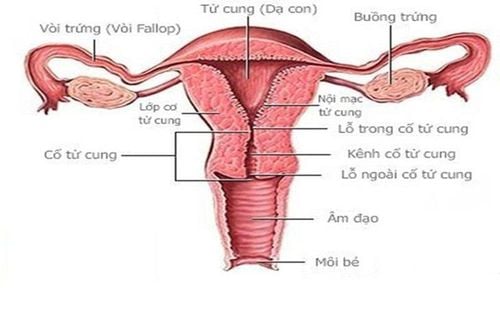This is an automatically translated article.
Pelvic floor dysfunction is a disease that causes many discomforts in the daily life of many people due to its effects on the urinary tract, digestive tract, sexual tract...
1. What is pelvic floor dysfunction?
All the structures inside the pelvis including: The pubic joint to the coccyx, the pelvic wall side to side, and the interlocking fascia and muscles called the pelvic floor.
The pelvic floor consists of three organs:
Lower urinary system includes the bladder and urethra Genital system includes the uterus and vagina Lower digestive system includes the rectum and anus. The pelvic floor has the function of keeping the internal organs in place, not falling down when active or doing heavy work. In addition, the pelvic floor also has the function of helping to open and close the openings of the urinary tract, vagina and anus, helping people control defecation, urination at will, sexual activities and the process of sexual intercourse. giving birth easier.
The three urinary, genitourinary and digestive systems work in harmony and rhythm with each other under the active control of man.
Pelvic floor dysfunction is the inability to keep internal organ systems in their original positions due to aging of the muscles or ligaments due to causes such as age or the effects of pregnancy. women.

Phụ nữ bị rối loạn chức năng sàn chậu thường do quá trình mang thai
2. Subjects at risk of pelvic floor dysfunction
Not everyone is at risk for pelvic floor dysfunction. The following are the groups that are most at risk of pelvic floor dysfunction:
Women whose pelvic floor muscles weaken with age or number of pregnancies Menopausal women with a decline in female hormones also cause pelvic floor dysfunction. Obese women, chronic cough or chronic constipation cause long-term pressure on the abdomen. Women who do heavy lifting for a long time.

Béo phì cũng khiến sàn chậu phải chịu áp lực trong khoảng thời gian dài
3. Signs of pelvic floor dysfunction
The risk of pelvic floor dysfunction for older women is quite high, so you should pay attention to the following symptoms to detect the condition early and have the most appropriate treatment plan:
3.1 Urinary tract The patient is unable to control the urinary tract when exertion, such as: Leaking urine when laughing or coughing, when sneezing, during vigorous activity or carrying heavy objects. In addition, when the urge to urinate, the patient often urinates urgently and cannot control his will. Patients will often urinate more at night, often will urinate more than once at night. Urinating more than once a day, usually less than an hour between each time or urinating more than 8 times a day. 3.2 Gastrointestinal tract Cases of flatulence, leakage of stools when coughing, sneezing or running or jumping with vigorous activity. Inability to control when defecating. In case of long-term constipation, difficulty in defecation, enemas or oral drugs must be used. 3.3 Genital prolapse Uterine prolapse, bladder prolapse, rectal prolapse or bowel prolapse...
3.4 Sexual dysfunction Patient feels pain during sex Decreased orgasm sensation or no sensation during sexual intercourse intercourse Feeling that my door is wide, not as tight as before.

Người bị rối loạn chức năng sàn chậu sẽ cảm thấy đau đớn khi quan hệ
3.5 Chronic pelvic pain Persistent pain in locations such as the lumbar region, lower abdomen or vulva area.
4. How to treat pelvic floor dysfunction?
Pelvic floor dysfunction, although not life-threatening, its effects reduce quality of life and cause a lot of discomfort for patients. To treat this disease, doctors often give the following advice:
Patients should change their living habits such as eating healthy, should eat more fruits and vegetables, minimize fatty foods, should not eat salty foods and drink enough 1.5-2 liters of water per day. You should also have a reasonable exercise regimen, it is best to exercise for 30 minutes a day to have a healthy body and control a reasonable weight. Exercise the pelvic muscles according to a number of exercises available according to the instructions. Use of topical anti-infective drugs when there is inflammation or vaginal hypotrophy In cases of pelvic organ prolapse or urinary incontinence, a Pessary ring can be used. If using the above methods does not achieve the desired effect, your doctor will recommend you to perform surgery to treat pelvic floor dysfunction. Any questions that need to be answered by a specialist doctor as well as if you want to be examined and treated at Vinmec International General Hospital, you can contact Vinmec Health System nationwide or register online. online HERE.
MORE
Pelvic floor exercises, back pain relief for women after cesarean section Signs of pelvic floor dysfunction Treatment of pelvic floor dysfunction in women













